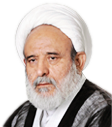|
The number of martyrs slightly varies from one author to another. Some include those who were martyred as a prelude to Karbala, such as Muslim ibn Aqeel, Hani ibn Urwa… etc., and those who were martyred after Ashura. Other stick to only those martyrs who were slain at Karbala. Depending on such classification, the number of martyrs varies from 72 to the double of this number. In the volley of arrows showered by Ibn Sa’d’s army on Imam Husain’s camp, the following persons were martyred and their horses also were killed even before fighting in the battle:[1] 1. Na’eem bin Ajlan al-Ansari 2. Umar bin Ka’b al-Ansari 3. Handhala bin Umar ash-Shaibani 4. Qasit bin Zuhair 5. Karsh bin Zuhair 6. Kinana bin Ateeq 7. Umar ad-Dhabbi 8. Dhirghama bin Malik 9. Saif bin Malik an-Nimyari 10. Abdurrahman bin Abdullah 11. Majma’ bin Abdullah al-Aa’ithi 12. Hannan bin Harith as-Salmani 13. Amr al-Jundi 14. Hallas bin Amr ar-Rasibi 15. An-No’man bin Amr Rasibi [1] At-Tabari, quoted in ‘Life of Husain’ by Mirza Ghulam Abbas Ali, p.167.
|
|
16. Siwar bin Abi Humair al-Fahmi 17. Zahir bin Amr; bondsman of ibn al-Hamq al- Khuza’iy 18. Jabala bin Ali ash-Shaibani 19. Ammar bin abi Salama 20. Mas’ood bin al-Hajjaj 21. Hajjaj 22. Zohair bin Basheer 23. Ammar bin Hassaan 24. Abdullah bin Umair 25. Aslam bin Katheer al-Azdi 26. Zohair bin Muslim al-Azdi 27. Abdullah bin Yazid al-Qeisi 28. Abdullah bin Urwa al-Ghifari The names of the valiant nobles who fought and were martyred at Karbala are as the following, though not in order of precedence in their martyrdom: 1. Al-Hurr ibn Yazid al-Riyahi 2. Al-Hurr’s son 3. Al-Hurr’s brother Mus’ab 4. Al-Hurr’s slave Urwa 5. Abdullah bin Umar 6. Burair al-Hamadani 7. Wahab al-Kalbi 8. The wife of Wahab 9. The mother of Wahab 10. Umar bin Khalid al-Azdi 11. Khalid bin Umar 12. Sa’d bin Handhala at-Tameemi 13. Umair bin Abdullah al-Muthhaji |
|
14. Muslim ibn Awsaja 15. The son of Muslim ibn Awsaja 16. Hilal bin Nafi’ al-Bajali 17. The son of Hilal bin Nafi’ 18. Habib ibn Mudhahir 19. Sa’eed bin Abdullah[1] 20. Zohair ibn al-Qain 21. Abu Thumama as-Saidawi 22. al-Hajjaj bin Masrooq 23. Mubarak 24. Yahya bin Katheer 25. Yahya bin Muslim 26. Handhala bin Sa’d 27. Abdurrahman bin Abdullah 28. Umar bin al-Kkattab al-Ansari 29. John; Abu Tharr’s slave 30. Umair bin Khalid as-Saidawi 31. Sa’eed bin Umar 32. Qurra bin Qurra al-Ansari 33. Malik bin Anas al-Maliki 34. Umar al-Ju’fi 35. Aabis bin Shabeeb 36. Showthab bin Aabis 37. Abdullah al-Ghifari 38. Abdurrahman al-Ghifari 39. A Turkish bondsman of Imam Zainul Aabidin (a.s) [1] Sa’eed bin Abdullah; he and Zohair stood in front as a shield to protect Imam Husain (a.s) from the volley of arrows during his Noon Prayer. Sa’eed was mortally wounded by an arrow and was martyred.
|
|
40. Yazid bin Ziyad 41. Yazid bin Mohajir 42. Saif bin Abil Harith 43. Mu’allah bin Mu’allah 44. Thur-Rimma bin Adi 45. Muhammad bin Mu’allah 46. Jabir bin Urwa al-Ghifari 47. Abdurrahman bin Kadri 48. Abdurrahman’s brother 49. Malik bin Ows 50. Anees bin Minhal 51. Abul Sh’atha’ al-Kindi 52. Umar bin Khalid as-Saydawi 53. Khalid bin Amr 54. Sa’d the retainer of Umar bin Khalid 55. Jabir bin al-Harith as-Sulaymani 56. Majma’ bin Abdullah al-Aa’ithi 57. Suwayd bin Amr bin Abi Mutaa’ 58. Sa’d bin Handhala at-Tamimi 59. Umair bin Abdullah al-Mathhaji 60. Abdurrahman al-Yaznee 61. Yahya bin Salim al-Muzani 62. Malik bin Anas al-Kahili 63. Anees bin Ma’qal al-Asbahi 64. Abul Sh’atha’ al-Kindi 65. Junadah bin Harith al-Ansari 66. Amr bin Junadah 67. Malik bin Dawdan |
|
68. Ibrahim bin Hussayn al-Azdi 69. Amr bin Qaradhah 70. Ahmed bin Mohammed al-Hashimi Sheik as-Saduq gives the following as the martyrs from the tribe of the Banu Hashim:[1] 1. Al-Abbas bin Ali bin Abi Talib whose mother was Ummul Banin 2. Abdullah bin Ali bin Abi Talib whose mother was Ummul Banin 3. Ja’far bin Ali ibn Abi Talib whose mother was Ummul Banin 4. Uthman bin Ali bin Abi Talib whose mother was Ummul Banin 5. Abdullah bin Ali bin Abi Talib whose mother was Layla bint Mas’ud 6. Abu Bakr bin Ali bin Abi Talib whose mother was Layla bint Mas’ud 7. Muhammad bin Ja’far 8. Own bin Ja’far 9. Ja’far bin Ali bin Abi Talib 10. Abdurrahman bin Ali bin Abi Talib 11. Abdullah bin Ail bin Abu Talib 12. Muhammad bin Ail bin Abu Talib 13. Al-Qasim bin al-Hasan (a.s) 14. Abu Bakr bin al-Hasan (a.s) 15. Abdullah bin al Hasan (a.s) 16. Ali ibn al-Husain (Ali al-Akbar) 17. Abdullah ibn al-Husain (the infant Ali al-Asghar) 18. Imam Husain (a.s) The popular belief is that the total number of martyrs is twenty-seven. However, some historians consider them to be above one hundred and twenty. S.V. Mir Ahmed Ali is an erudite writer from Madras, now called Chennai in South India. His translation and commentary of the Qur’an in English with an excellent introduction running to over three hundred pages is well-known and has been printed several times by [1] As-Saduq’s al-Irshad, Tr. IKA Howard, p. 372-373.
|
|
the Tahrike Tarsile Qur’an, New York. In his book ‘Husain; The Saviour of Islam’, S.V. Mir Ahmed Ali Vafaqani gives a brief note on each of the one hundred and five martyrs by name and a list of one hundred and thirty-eight martyrs classified as follows:[1] [a] The Hashimites; the progeny of Abu Talib Those who are mentioned in the Ziyarate Nahiya.. 18 Those who are not mentioned in the Ziyarate Nahiya.. 13 Three Young children 3 Total: 34 [b] the Number distributed according to the immediate parentage of martyrs: 1. The Holy Imam 1 The sons of the Holy Imam [Two in Karbala; Abdullah martyred later and buried in Asqalan] 3 The sons of Amirul Mo’minin... 9 The sons of Imam Hasan 4 The sons of Aqeel 12 The sons of Ja’far 4 [c] The comrades of the Holy Imam those who are mentioned in the Ziyarate Nahiya... 70 Those who are not mentioned in the Ziyarate Nahiya... 27 The number of martyrs in Kufa 8 Total: 105 Total martyrs: 105 + 34 = 139 S.V Mir Ahmed Ali Vafaqani has taken into account the eight companions who were martyred at Kufa, such as Hani ibn Urwa…etc., [1] S.V. Mir Ahmed Ali’s ‘Husain; The Savior of Islam’, p.196 – 213.
|
|
to arrive at the figure of 139 martyrs. In addition to giving details of martyrs, Sheikh Abbas al-Qummi gives a list of persons who were present in Imam Husain’s camp at Karbala on the Tenth of Muharram who did not fight but they escaped alive. The reason for this is manifold. Firstly, the number, names and details of martyrdom at Karbala were already revealed to the Prophet (s) who in turn had informed Imam Ali, Fatima Imam Husain, Umm Salama and other members of the Prophet’s family (the Ahlul Bayt) peace be on them. Sheik Mohammed Saffaar al-Qummi, who died in 290 AH, relates in his book ‘Basayerud Darajat’ that Huthaifa narrated that he was present with Imam al-Hasan (a.s) when he was returning to Medina after concluding a treaty with Mu’awiya. The load on one of the camels was being zealously guarded all the time. Huthaifa inquired the reason for such security given to that particular load, and Imam Hasan (a.s) informed him that the load consisted of musters of the names of the Shia.Huthaifa wanted to see if his name was in any of those registers. The Imam (a.s) asked him to come the next day. Huthaifa, who was illiterate, took with him his nephew who could read and write. The Imam (a.s) took out a register. On perusing, the nephew found his name in the register and shouted joyfully that his name was there along with that of Huthaifa. This young man was later martyred in Karbala along with Imam Husain (a.s).[1] Apart from this, those who escaped alive were nonetheless Shia of Imam Husain (a.s) though of a lower caliber. They provided a vital link in the narration of events, though at times the trauma and the stress they suffered on seeing their beloved Imam (a.s) and his companions being killed and their bodies trampled clouded their perception. As a result, some of their narrations are not in conformity with the narrations of the Ahlul Bayt (a.s). Abdullah ibn Abbas, Abdullah ibn Ja’far and Mohammed bin al-Hanfiyya consoled themselves by saying that though they did not participate in the battle their representatives’ names were in the List of Martyrs.[2] At-Tabari and Ibnul Athir relate that al-Muraqqa’ bin Thumamah had spread the quiver of arrows on the ground and kneeling down, he [1] Nafasul Mahmoom, p. 358.
[2] At-Tabari’s Tarikh, vol. 6 p.218. |
|
fought the enemy. Suddenly, a group of people appeared, took him under their protection, and took him away from the battlefield. Umar bin Sa’d took him to Ubeidullah ibn Ziyad and related the incident. Ibn Ziyad banished bin Thumamah to az-Zarah.[1] At-Tabari and ibnul Athir relate that Ad-Dhahhaak bin Abdullah al-Mashriqi and Malik bin an-Nadhr al-Arhabi met Imam Husain (a.s) before the battle and informed him that the people of Kufa were determined to fight and kill him. When they were about to depart, the Imam asked, ‘Why don’t you join and assist me?’ Malik bin an-Nadhr replied that he had a family to look after and that he was in debts. Ad-Dhahhaak said, “I too am in debts, though I have no children. However, I will stay with you if you promise to excuse me, if my being with you is of no more help to you.” The Imam (a.s) agreed. Ad-Dhahhaak had hidden his horse in a tent. When none except Imam Husain (a.s) was left, ad-Dhahhaak reminded the Imam about the promise. The Imam said, “Yes, you are free to do what you want.” Ad-Dhahhaak took out his horse and rode through the enemy, taking them by surprise. His tribesmen and some sympathizers saved him from the pursuing enemy. [1] Nafasul Mahmoom, p. 355.
|
source : http://www.maaref-foundation.com













